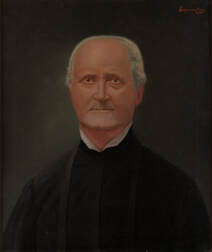 Fr. Paul Ponziglione Fr. Paul Ponziglione Some time ago we posted Chapter XXVII of Father Paul Ponziglione's unpublished memoir. It is a very long chapter that covers several subjects, eventually leading up to the start of Civil War activity in southeast Kansas. The events he described occurred in 1861, and much of it was about the threats of guerilla warfare and all-out lawlessness as the war ramped up in our region. The very last topic, which was pretty brief, might have been skipped in reading. But it pointed out two things:
"On the 7 of December (1861) my dear friend and companion Father James C. Van Goch, who at that time was visiting the Catholic Families in the vicinity of Fort Scott, had a narrow escape from the hands of a company of drunken Union men, who about 3 o’clock p.m. attacked him on the high way, took his horse, and having ordered him to kneel down, they would most certainly have shot him, had it not been for the sagacity of their Captain Mr. Bell, who was the only sober man of the party. Thus seeing that his soldiers were determined on killing the Father, remonstrated that they were not allowed to do any such thing, without first giving him a fair trial. “Let us” said he, “bring our prisoner to the camp, there we shall hold a court-martial, and condemn him to be shot, doing so we will be all right.” This suggestion proved satisfactory to all. The Father was ordered to get again on his horse, and surrounded by those unruly fellows, who were sneering at him, and cursing him at every step, at last they reached the camp. Here the Captain told the men to unsaddle their horses, and bring them down in the valley along the creek, where there was, as yet, some good grazing ground left. “This done, said he, “come up and we shall have a court-martial on the Father!” The men yelling like a gang of wild Indians now started down the hill to comply with the orders they had received. As soon as they got out of sight, the Captain addressing the Father with great respect and kindness told him not to fear, and asked him where he wanted to go? The Father replied that he was on his way to the residence of a Catholic family, where he was expected to have Mass on the next morning. Then the Captain answered “Well Father, let us go at once, we will soon be there.” Both started on a gallop, and in short time reached the house, where the Father was expected, and there apologizing for what his men had done, the Captain left him with his friends." Some Reference Information:
1. Chapter XXVII of Father Paul's handwritten memoir was long, but interesting. Handwritten in composition notebooks, it used nearly 52 pages, and transcribed to 20 pages of 12 pt. Times Roman. We titled the chapter Winds of War. The entire Chapter is HERE. 2. The picture of Father Ponziglione was digitized for A Catholic Mission by the Kansas State Historical Society. The original painting was commissioned by Knights of Columbus Council 760, St. Paul, in 1906. After a brief display in St. Paul, it was donated to the historical society to preserve the memory of the then-famous Jesuit Missionary. For more information about Father Paul and the painting, follow THIS LINK. While looking through the manuscript of Randy Dunavan's upcoming book, "Who's Behind the Window," I came across newspaper clippings about a very familiar home at the northeast edge of St. Paul. That is were W.W. O'Bryan built what was described as "... one of the most Commodious and Handsome Residences in the County" 115 years ago (Erie Record, Friday, February 9, 1906) During the early 1900's St. Paul was experiencing a residential building boom. By then the town was well established, there were many businesses and businessmen, and we were prosperous. On Thursday, October 19, 1905 the following article appeared in W.W. Graves' [2] St. Paul Journal:
Many of St. Paul's fine old homes, built during that era, are gone. A few of them burned and others were razed. But the home that W.W. O'Bryan built 115 years ago is still there and looks better than ever. A few years back it received a great deal of love from it's current owners. That love included thorough systems and equipment upgrades, while retaining it's original beauty and charm. It also included a great deal of hard work and sweat equity while the owners lived in it. The best part is the careful, loving update was done by David and Jane O'Bryan! 1. The same photo of the O'Bryan home appeared on the front page of two St. Paul Journals. The top photo is from the April 9, 1908 issue. It also appeared in the February 7, 1907 issue. Clippings were downloaded from Newspapers.Com, via the Kansas State Historical Society's Kansas Newspapers site.
2. There can be little doubt that William Whites (W.W.) Graves, with his Journal Publishing Company, was one of St. Paul's greatest, all time boosters. 3. The photo of the current home was taken by R. Brogan. We Are Accustomed to the Beautiful Stained Glass Artwork that Surrounds Us. It Wasn't Always Like That! The image above was taken during Father Paul Ponziglione's Jubilee celebration on February 27, 1889. Father is at the right side of the altar facing east as the deacon chants the Gospel on the left. Bishop Hennessy is at far left. At the time of the photo the new St. Francis de Heironymo Catholic Church was not even five years old. The structure was dedicated in May of 1884. Father Ponziglione oversaw its completion after the death of his colleague, Father John Schoenmakers, the year before. This was Father Paul's last significant event at his beloved St. Francis Church. In August of 1889, he was sent, briefly, to Marquette College in Milwaukee. From there, at age 72, he was sent to Wyoming for nearly two years to assist with the start of St. Stevens Mission, north of Lander. After the Wyoming assignment, he turned in his saddle and spent his remaining years doing inner-city missionary work while assigned to St. Ignatius College, Chicago. He passed away on March 28, 1900. [1] A Modern Photo, Similar Position. The photo below is from a similar angle but taken recently. It is a sharper digital photo, but the colors have been muted slightly. What has changed? Even with muted colors, the stained glass windows stand out. The large windows are at second-floor elevation and nearly align with the top of the main altar. Smaller windows have been added to the top of the previous arched doorways. When you look at the early photo, the upper windows appear to be double-hung with sliding lower panels. This feature allowed those windows to be opened, so priests and others could attend Mass from above. A sharp eye will notice the top of the altar. The three caps, above the statues were much taller when the original photo was taken. 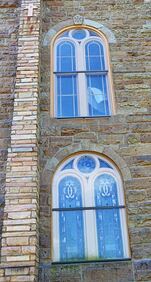 Click to enlarge. Click to enlarge. But Back to the Windows. When St. Francis Catholic Church was dedicated in 1884, Nearly all of the windows were somewhat similar to the upper arched windows with metal inner-frames and clear glass. It wasn't until 1900 that Father Boniface entered into a contract with the Kansas City Stained Glass Company to replace nearly all of the original clear glass windows with stained glass panels. There are a couple of relics, of the original windows, on the back of the church. The high arch windows, that illuminate the upstairs rooms still have the same clear glass, or at least glass that is similar to that originally installed. The photo shown here is of the northwest corner of the church. There is a matching upper window on the northeast corner. The lower, stained glass window is the main sacristy window. That window was added to the thick sandstone walls during construction of the Passionist Monastery in 1912. More about that later. The St. Aloysius Historical Society regrets to announce that our annual Greenbush Days Celebration and Hog Roast, scheduled for September 20, has been CANCELLED. We do plan to be back, in full force, next year.
Occasionally readers request assistance with research, or to solve a puzzle. We finally solved this puzzle, then we learned some interesting things about the person who sent it to us. A few weeks ago we received a request from Kelly Park of Skiatook, Oklahoma. Technically, Skiatook is in both Osage and Tulsa Counties but is generally considered to be an Osage County city. Osage County is the largest county in Oklahoma and is the Osage Nation Reservation. Kelly was transcribing a baptismal letter, written by Father Paul Ponziglione, that has been passed down through his family. He was having trouble interpreting a word. The letter recorded the baptism of Augustus Cyrus Captain, Ririe on 11th of April, 1877. The baptism was performed by Father Ponziglione, on Hominy Creek, Osage Reservation, Indian Territory. 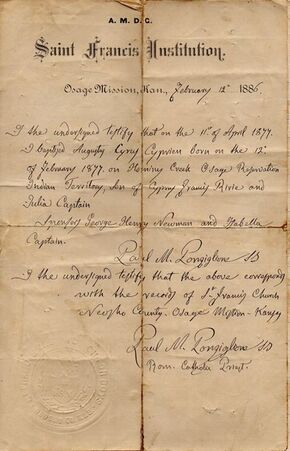 Click to enlarge Click to enlarge Kelly sent an image of the letter and told me he was having trouble determining the first word of the second paragraph "(_____?) George Henry Newman and Isabella Captain." He found our website and discovered I have been transcribing Father Ponziglione's memoirs. He thought my experience could help him decipher the writing. Having transcribed more than 100 pages of Father Paul's writing I was pretty confident too — until I saw it. I had No Clue what that word was! None! Both Rosie and I looked at it, squinted, held the document at various angles and nothing popped out. The crease in the paper, at the bottom of the line, didn't help. Finally I looked at some of the material that I had already transcribed, and a light went on. While Father Paul's writing is pretty consistent, his letter "S" can take on several forms. [1] The word in question appeared to be "Sponsors." That made sense. George Henry Newman and Isabella Captain were the baptismal sponsors for Augustus. Some Background (and some of it is local). I responded to Kelly and we agreed on the word "Sponsors." In correspondence Kelly told me that Isabella Captain was his 2nd great grandmother and the sister of Julia Captain Ririe, whose son was baptized. The Osage side of Kelly's ancestry has a deep roots with the Catholic Osage Mission/St. Paul. He had researched Louis Burns' "Osage Mission: Baptisms, Marriages and Interments." Julia Captain was also baptized by Fr. Paul on November 25, 1855. Julia's father was Augustus "Ogeese" Captain, a one-half blood Osage. He had also read our transcription of Father Paul's memoir, Chapter XI - "Miss Lucille St. Pierre came to the Neosho." The chapter mentions Edward Chouteau's wife Rosalia Captain Chouteau. Rosalia was Kelly's fourth great aunt and the sister of Augustus Ogeese Captain. If the name sounds familiar to St. Paul residents, Ogeese Creek, four miles west of town, is named after Augustus Ogeese  Closed the Loop — Very Sadly. Kelly sent a photo of the grave stone of Augustus Ririe, who the baptismal Record is for. The grave is in the Captain Cemetery, southwest of Skiatook. From the inscription on the stone, young Augustus died on March 30, 1895. He barely made it to his 18th birthday. His Mother, Julia, passed a month later. Click on the photo at right to read the inscription. By the way - Kelly has another connection with Captain Cemetery. In our last correspondence, he said he was heading out to mow it. They are proud of their historic cemetery. 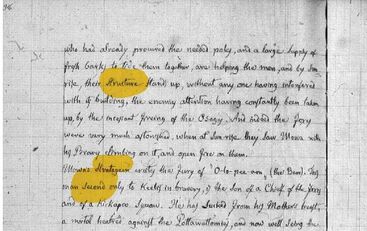 Click to Enlarge. Click to Enlarge. Some Reference Information: 1. His Handwriting. in her book, Beacon on the Plains, Sister Mary Paul Fitzgerald refers to Father Ponziglione's "diamond-fine script." His handwriting is pretty consistent — but with some quirks. His letter "S", both upper and lower-case, is one of them, A lower-case "s" often looks like a vertical or slanted line with a slight curve; and the upper-"s" might blend into the next letter. The height might be the same as surrounding letters; or it can include a flourish that extends up into the line above. But, with practice, the lower-case "s" is recognizable. However, his upper-case "S" can look like S's, G's, F's and other things. That is what caused the head scratching with Kelly's document. When the letter appears in an otherwise recognizable word it is easy to decipher. In the case of the baptism record, it wasn't. A sample of his memoir is shown above. Words with the upper case "S" are highlighted. You can see lower case "s" in other places. Once you master his "S, s" the rest is fairly easy. There — you have been trained to read Fr. P's handwriting! 2. The Baptismal Letter. A sharp eye might have noticed a couple of things in the letter:
On April 28, 1847, one of the longest, continuous-running stories in Kansas history got its start in Neosho County. Political wrangling and planning started a few years earlier; but when the Osage Mission opened, in April of 1847, it had a substantial effect on the future of of the Osage People, education, religion, commerce, and the settlement of southern Kansas and the four-state region. The story continues. On April 28, 1847, several ox-drawn carts lumbered into the grounds of a newly constructed mission-yard. Five weary men climbed down from the carts and were quickly surrounded by an enthusiastic group of Osage who had come to greet the Tapuska-Watanka (priest lords). The missionaries included Mission Director, Father John Schoenmakers; his young assistant Father John Bax; and three coadjutor brothers: John Sheehan, John De Bruyn and Thomas Coglan (Brother Thomas O’Donnell joined them in 1848). All of the missionaries had already immigrated to a new land when they came to America, and the Mission site might have seemed alien. Father Bax’s impression of their arrival was embodied in a letter to Father Pierre Jean De Smet: "It would be impossible to paint for you the enthusiasm with which we were received … At first sight of these savages … I could not suppress the pain I felt … The adults had only a slight covering over the middle of the body; the little children, even as old as six or seven years, were wholly destitute of clothing. Half serious, half jesting, I thought that a truly savage portion of the Lord’s vineyard had been given to me to cultivate.” These men were the first missionaries to staff the government's Osage Mission Indian boy's school. A group of four Loretto Sisters opened the girl's school the following October. More Jesuits and Lorettos would follow. The mission was so remote and foreboding that government contractors rushed through construction of the mission buildings so they could return to civilization. As a result the missionaries dealt with leaks, a fireplace chimney collapse and structural problems for years. But the schools thrived, as best as they could, with inadequate funding; and through famine, epidemics, floods, a War and deaths. Through it's trials, the missionaries witnessed the birth of civilization in southern Kansas. They watched barren prairies transform into a landscape of homesteads and small towns and the Jesuits assisted with the founding of several settlements. With Osage Mission serving as the Jesuit missionary headquarters, south of the Santa Fe Trail, they established more than 150 mission stations in Kansas, Missouri, Oklahoma, Arkansas and Colorado. When the Osage land cessions occurred during the 1865 - 1870 period, the Jesuits and Lorettos had a plan and the means to execute it. As part of the Osage land cession treaties, Father Schoenmakers was gifted a section of land by the Osages, and options to buy more, which he did. When he founded the town of Osage Mission, he already had a church, schools and a well trained staff of school teachers and administrators. Beginning with the establishment of his town company, Father Schoenmakers undertook the work of transitioning the Indian schools into public schools and he and Sister Bridget Hayden built two prestigious frontier boarding colleges. The mission and it's schools eventually evolved into a very unique new town and the schools we enjoy today. The schools on the lots west of the present St. Francis Catholic Church have provided continuous, quality education for 173 years — They have never missed a term! The following link from the St. Francis Catholic Church website is an abridged version of the Osage Mission Story:For the entire 15 chapter Osage Mission story,follow THIS LINK. [1] Some Reference Information:
1. The Saint Francis Catholic Church history page does not include Chapter 14 of the A Catholic Mission "Our Story" page (The Anti-Horse Thief Association). These are photos of " .. this community's most esteemed and honored citizen" in front of his home in St. Paul. Those words are from the opening paragraph of his obituary on the front page of the July 24, 1952 issue of the St. Paul Journal. We believe the words are still appropriate. The original photos were not marked.[1] But, judging from his age, they were probably taken around 1940. The house is still there, is very well-kept and is now the home of a young, well-know family. "Most esteemed and honored citizen" are big words when you place him among the thousands of people who have lived in St. Paul, Kansas. But when you consider his humble beginnings, what he accomplished in life and the extraordinary recognition he received, it fits. He and his parents arrived here, then Osage Mission, in February of 1881. He attended local pubic schools and then jumped at an opportunity to further his education at St. Francis Institution.[2] He graduated with honors. Later, he cut his journalism teeth working for colorful newspaper editor Abe Steinberger at Pittsburg, and later Girard. Then, bad luck, followed by some good luck, put him in charge of his hometown newspaper, The Journal. From there he credited "opportunity" for several more changes in his life. He became a leader of a prominent volunteer law enforcement group. He grew his Journal Publishing Company by taking on some state and national magazine and newspaper contracts and published several books. He dabbled in other businesses and helped some local entrepreneurs get started; and he "seeded" a public library. During all of this he was always one of St. Paul's biggest civic boosters. However, with success he also experienced personal tragedy and serious health problems. He tried to stay away from notoriety. After all, he was only doing what he enjoyed — but others benefited from his effort. Finally in 1952 notoriety caught up with him. During a local banquet he was showered with awards and accolades. Of all of the honors he received that evening, there were two he certainly cherished during his brief, remaining days. Those came from his beloved Osage friends and the Vatican. For more about this man and his remarkable life, FOLLOW THIS LINK. Some Reference Information:
1. The photos above are from the Graves Hopkins Collection of the Osage Mission - Neosho County Historical Society. 2. For more information about St. Francis Institution follow THIS link. "Tempers grew short on both sides as approximately 140 met in Walnut to discuss the Neosho County wildlife refuge with Bill Fowler, 4th district Kansas Fish and Game Commissioner from Weir. Fowler's vote as the newly appointed commissioner from this district is necessary to break the commission dead lock and insure completion of the project. Fowler replaced A. H. Alcock of Chanute, a backer of the refuge." Are you still looking for a last-minute gift for history buffs, or an older relative who would enjoy browsing through stories and clips from earlier days of St. Paul. David O'Bryan's "Annals of St. Paul: The Swan Song for the St. Paul Journal" might be a perfect selection. The book includes selected articles from the St. Paul Journal during the time frame of July 2, 1936 through the Journal's last issue of November 16, 1961.[1] The entries are complete newspaper articles or excerpts from Journal articles. All are listed by issue dates that are traceable back to paper or microfilmed issues of the Journal. In addition to being a great gift, profits from the sales of the book will fund scholarships for St. Paul students! About the Book. Swan Song is a 8.7" x 11.2", 516 page hard-bound book. One of the book's valuable research features is a very detailed 55 page index. If friends or family members lived in or near St. Paul there is a pretty good chance they are listed. The index also includes businesses, natural disasters, fires, deaths and other events that shaped our town from the 30's to mid 20th century. There are also articles about other local towns including Walnut, Galesburg, Thayer and others. Two galleries below give you a glimpse into the index and some of the content of this intriguing historical resource. Index: Here is a sample of 17 pages from the 55 page index that illustrates the attention to detail that went into categorizing and listing the contents. The pages will scroll or can paused with the controls at the top. These are low resolution scan images that do not represent the sharp, slick quality of the actual book. Content: Shown below are some actual pages from the book that can be enlarged with a mouse click. Again, these are scanned at low resolution to control file sizes. 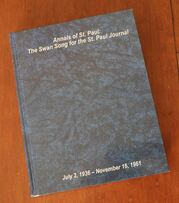 How Do I Get One? The book was published by David O'Bryan of St. Paul in 2009. Profits generated from sale of the book will be used to fund scholarships, for St. Paul Students. Books may be purchased for $40, plus $5 for out-of-town purchases. You can order a book, or get more information at: [email protected]. "His name was Father Paul Ponziglione who is remembered as laying the foundation of many parishes in this area during those early years." Page 5 of the October 18, 2019 Catholic Advance includes a half-page article on the history of Sacred Heart Catholic Parish in Eureka. The article, by Wichita Diocesan Historian, Father Michael Peltzer, tells a story that has a familiar ring across southern Kansas, Missouri and northern Oklahoma: "The first Mass in the Eureka community was celebrated in 1872 in a stone house on the corner of Seventh and Elm streets, a block north of the present parish site, by a Jesuit missionary from the Osage mission, now St. Paul, in Southeast Kansas. His name was Father Paul Ponziglione who is remembered as laying the foundation of many parishes in this area during those early days." 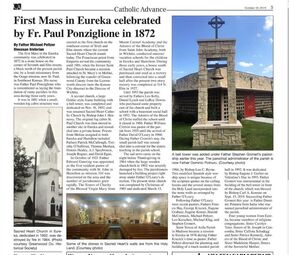 Father Ponziglione was the most prolific 'mission founder' among the Osage Mission Jesuits. But if you insert names like: Fathers Colleton, Schoenmakers, Bax and others, there are similar stories about more than 150 mission stations in Kansas, Missouri, Oklahoma and Arkansas. There was even one railroad worker's mission in Pueblo. Did all mission stations become churches? No, but many did . [1] Click on the image above to open a PDF copy of Father Peltzer's article. You can also open the entire October 18 issue of the Catholic Advance HERE. Some Reference Information:
1. Here are a couple of links that might help you understand the scope of the wide-ranging missionary work done from Osage Catholic Mission:
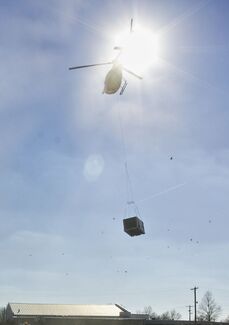 We came across these photos on our hard drive today. The date stamp is January 19, 2009 and that is probably close. It was an exciting day here in St. Paul. Saterlee Plumbing, Heating and Air Conditioning brought in one of their signature helicopters to install the HVAC equipment on the roof of the new High School. The sound of the rotors and the flying debris added to the excitement. But even more, we knew the long-awaited High School Building was getting very close to completion. A few months later we would dedicate a building that was our long-time dream. For those with a general knowledge of "The Legend of Greenbush" the meaning behind the pilgrimage between Greenbush and Osage Mission - St. Paul is pretty clear. But the symbolism that compares it with the Jesuit missionary work in Southeast Kansas goes deeper. The first — hopefully of many — Pilgrimage on the Plains is scheduled for tomorrow, September 14. Being scheduled the day before Greenbush Days might be a coincidence. If so it is a well timed coincidence. The Greenbush Historical Society has done a remarkable job of preserving their local history and these two events, together, seems like pretty good planning. The Legend of Greenbush is the title of a book copyrighted by W. W. Graves in 1937. in his words it is "The story of how a hail storm catching a missionary priest alone on the prairie caused him to make a vow that if his life was spared, he would erect a church on the spot, and also how that became the beginning of one of the best country churches in Kansas." Graves' book begins with the story of how Jesuit Father Philip Colleton kept his vow and built St. Aloysius Catholic Church. It goes on to tell much of the story of the Greenbush church and that community up until Graves published his book. That story continues. Those of us familiar with Greenbush realize there is much more to this tiny town than the row of houses (mostly O'Toole's) north of Highway 47; the Education Support Center [1] and historic buildings across the street. The Greenbush "community" is broadly dispersed among rural friends, education center employees, and an enthusiastic group of former residents that stretches across the nation. The Friends and Followers of Greenbush, Kansas, Are a Family. [2] If There is any doubt, come to the Greenbush Days celebration on Sunday, the 15th. 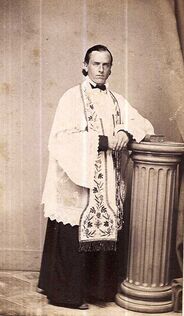 Father Philip Colleton [3] Father Philip Colleton [3] Symbolism Behind the Pilgrimage? Greenbush (Hickory Creek) was only one of Father Colleton's mission stations. During his nine years at Osage Mission (1867 - 1876) he established at least thirty-five mission stations in an area bounded by Mount Vernon, Missouri, west to Pueblo, Colorado; and the Santa Fe Trail, south into northwest Arkansas. However, most of his work was done in the mining camps, small communities and railroad yards in southeast Kansas. Many of his mission stations grew into churches. Several of the churches sprouted Catholic schools. Father Colleton wasn't the only one. Fathers Paul Ponziglione, Schoenmakers, John Bax, Philip Colleton and others served a very broad area with much of their work in the historical nine-county southeast county region. A few of their stations are listed here: [4]
When you think about it, the Pilgrimage on the Plains could represent many of the Osage Mission Jesuit trips into area settlements. Some Reference Information:
1. Greenbush is the home of the Southeast Kansas Education Service Center. The center serves students and educators not only in southeast Kansas but statewide. Follow THIS LINK for more information. 2. It has occurred to us that expansion of Graves "Legend of Greenbush" might be a good project for a Historic Society. A new book, based on his original text, could pick up from where he left off in '37. The addition of the school, startup and growth of the Education Support Center, the cemetery, church and local community would be a valuable story for locals, former locals and historians in general. Might be a pretty good fund raiser too. Printing is expensive but e-books - not so much. 3. I received the photo of Father Philip from Tim Wenzl, archivist of the Dodge City Diocese. He received it from the Jesuit Archives, St. Louis. 4. In several cases the community listed does have a Catholic Church that was started several years after the Jesuit mission station. 5. For more information about Father Philip Colleton, follow THIS link. For more information about the wide-spread Jesuit missionary work done from Osage Mission, Kansas, follow THIS link. It Recently Occurred to Us That This Might Be the Longest Period of Time That Our Town Hasn't Had a "Watering Hole." 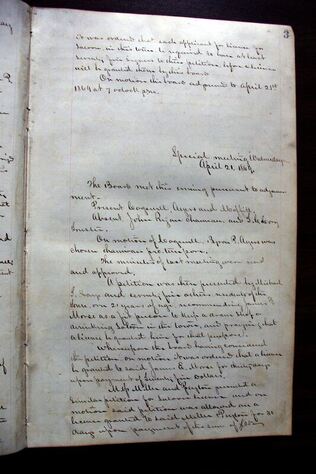 Minutes of April 21, 1869 Osage Mission Trustee's Meeting. Click to Enlarge. Minutes of April 21, 1869 Osage Mission Trustee's Meeting. Click to Enlarge. The Osage Catholic Mission was founded just over 172 years ago in April of 1847. By the late '60's the Osage were leaving Kansas, the original government mission was winding down and Father John Schoenmakers was starting a new endeavor; his "Mission Town" known as Osage Mission. In March of 1868 Father John started the Mission Town Company comprised of himself and a group of trusted businessmen. By April of 1869 the town was platted with a central business district and residential areas. On April 10, 1869, the trustees of the Osage Mission Town conducted its first meeting and started the process of being incorporated under Kansas law. Eleven days later, on April 21, 1868, a special meeting of the trustees was called to review and approve two petitions requesting licenses to operate dram houses, or Saloons, within the new city. Both were approved. It cannot be said that the mostly immigrant settlers of Osage Mission didn't have their priorities. [1] We Are Missing Something. This spring, as we are watching the "Dugout" bar transition into the "Refuge Patio and Grill" it occurs to us that this might be the longest period of time that our fair city has been without a watering hole. Thanks to Melinda and Perry O'Brien for keeping some brews flowing, with a friendly visiting spot, along with their delicious chicken and barbecue dinners. But their store is .... well ... too well lit and a little small for a pool table — and maybe too darned neat .... and orderly ... and quiet. St. Paul really needs to get a proper Dram Shop going again! Some Reference Information: 1. A review of the Annals of Osage Mission suggests there was an earlier saloon here. On April 2, 1867, the first county license to operate a saloon was issued with John M. Roycroft as master of ceremonies. Roycroft was a local farmer, businessman and real estate man. 2. For more information about the earliest days of the town of Osage Mission, follow THIS LINK. 3. In looking though David O'Bryan's Annals of St. Paul, The Swan Song* there seems to be no shortage of pool halls and bars here during the 20th century. "Boots", "Bradshaw Recreation Parlor", "Mac & Boots", "McAtee Recreation Parlor" and "Pastime" are mentioned. And these do not include "Ben's Pool Hall" or the VFW that many of us remember.
William Whites Graves was a brilliant, hard-working man. Had he decided to be a newspaperman and printer, a historian, a publisher, a civic leader, an entrepreneurial business man or a law enforcement official he would have done well — but he did all of those and he did them quite well! The W. W. Graves' story is of a life well lived. He was a passionate supporter of his hometown of St. Paul, Kansas; but the effects of his labors spread across Kansas and many other states. His accomplishments were formally recognized on May 31, 1952, when a diverse group of 240 people honored him with a banquet in the St. Francis School Gymnasium in St. Paul. The group included a bishop, the Chief of the Osage Nation, farmers, businessmen, state officials, college presidents, Kansas Press Association executives, the president of the Kansas State Historical Society, pressmen from across southeast Kansas, Graves’ friends from St. Paul and his wife, Susie. Among the accolades bestowed on him that evening were a rare Vatican Knighthood and an Honorary Osage Tribal Chief's status. One of his last projects started on June 29, 1950, with a column in his St. Paul Journal. He challenged his town to get a library program going. He seeded the project with $500, books and a bookcase from his own collection. He also injected some urgency into his project by telling his readers: “Now is the time. Not next year. The Journal man may not be on earth then, hence do not delay too long." As part of his challenge he enlisted the formidable resources of the local Women's Home Demonstration Units to see the project to completion and they did not fail him. Over the next few years the women's group raised money for their first facility and accumulated more than 1,000 books. In 1953 members of the Home Demonstration team transitioned into the library board. Working with the city council, the board moved into a temporary facility in a public school building in May of 1955. The new library was named. "The Graves Memorial Public Library." Graves had died suddenly, from a heart attack, on July 22, 1952. His death came only seven weeks after his honors banquet; and barely two years after he issued his challenge. At the time he issued his challenge, in 1950, he knew his right foot would be amputated in a couple of weeks. He knew exactly what he was doing when he entrusted his library to a capable women's project team. Spaceships and Astronauts? One has to wonder what Bill Graves would think about the "A Universe of Stories" Summer Reading Program in his library. He passed away five years before Sputnik and more than seventeen years before the Apollo 11 moon landing. As a voracious reader and journalist he had probably been exposed to science fiction space fantasies but other things were probably more important. But today there is an fully-suited astronaut at the front door of his library and other images inside that are based on space technology that we have taken for granted for years. What would he do if suddenly exposed to technology not dreamed of in his day? I have to think he would be surprised, then intrigued. He would probably start reading everything he could get his hands on and then put his trusty Royal typewriter to work. To learn more about this remarkable man follow THIS LINK to the Characters page of our website. Some Background Information: The Graves Memorial Public Library "A Universe of Stories" Summer Reading Program runs from June June 4 through July 16. The space themed program is shared by other regional libraries. The program schedule includes:
On May 11, 2019, our 'New' St. Francis Catholic Church building turned 135 years old! But our parish is several years older and there was an earlier building. St. Francis Catholic Church, St. Paul, Kansas, was dedicated on May 11, 1884. After nearly thirteen years of anticipation and slow construction the dedication was a triumphant moment — but tears were probably shed too. The church's champion and Osage Mission founder, Father John Schoenmakers, had passed away on July 28, 1883, only months before completion. It would take another 18 - 20 years to put the finishing touches on the Southeast Kansas landmark, but overall, May 11 was a good day. The Parish Was Older and There Was An Earlier Church. Our parish was established in April of 1847 when Fathers Schoenmakers and Bax and three Jesuit brothers arrived at the mission. During early months one of the government-built Osage Mission school buildings was used as a church. In a sense, St. Francis Parish was, itself, a mission station within a mission because a proper church wasn't available. In 1848 the Jesuits built a log church described as 35' wide by 30' long with a 16' roof peak. This building was expanded twice to a final size of 35' x 90'. [1] When Osage land cessions began in the mid-1860's, settlers flowed into the area. Father Schoenmakers' new mission town [2] was located near the eastern edge of the frontier. It's existing church and schools were attractive to many Catholics seeking new opportunities. Father John knew a larger church building was needed. The June 1871 issue of the People's Advocate newspaper announced: "The Catholics met at St. Francis Hall Sunday, June 25 and voted to commence operation at once on the foundation of a new stone church to be 160 x 74 feet and to cost $75,000." Below is a brief pictorial overview of the church buildings and their history. Also, follow THIS LINK for a description of the original church fund-raising and construction project and more recent upgrades. Slideshow: This slideshow should advance at nine second intervals. Hover your mouse over the frame for controls that will pause, allow manual advance or play. If viewed on a phone landscape orientation is suggested. Some Reference Information.
1. Dimensions of the original Log Church vary from 30' x 30' to 35' square, depending on source. The original church and it's first expansion were of log construction. The final expansion was frame construction and the entire building was covered with clapboard. In its final configuration the 'little log church' wasn't that small. It was 90' long and depending on width it was as large as 3,150 square feet (if 35' x 90'). More about the little log church in a later post. 2. Follow THIS LINK for more information about Father Schoenmakers' new mission town of Osage Mission. 3. For more information about the basement chapel added during the 1909 - 1910 foundation repair, follow THIS LINK. 4. For more information about the historic 1930 reinterment of the seventeen Pioneer Sisters of Loretto, follow THIS LINK. 5. The life-sized crucifix was donated to the church by the family of Michael Balfay. When the Balfay family was moving from Chetopa to Osage Mission in 1884, their wagon was caught in river current at Trotters Ford. While trying to save his team, wagon and family Mr. Balfay promised that if our Lord spared them he would make a lasting gift to the church. Michael's family was spared but before he could fulfill his promise he died suddenly. His family filled his promise in 1889. Southern Kansas and the Four-State Region Began to Change That Day. On April 28, 1847, several ox-drawn carts lumbered into the grounds of a newly constructed mission-yard. Five weary men climbed down from the carts and were quickly surrounded by an enthusiastic group of Osage who had come to greet the Tapuska-Watanka (priest lords). The missionaries included Father John Schoenmakers; his young assistant Father John Bax; and three coadjutor brothers: John Sheehan, John De Bruyn and Thomas Coglan (Brother Thomas O’Donnell joined them in 1848). All of the missionaries had already immigrated to a new land when they came to America, but the Mission site might have seemed alien. Father Bax’s impression of their arrival was embodied in a letter to Father Pierre Jean De Smet: “It would be impossible to paint for you the enthusiasm with which we were received … At first sight of these savages … I could not suppress the pain I felt … The adults had only a slight covering over the middle of the body; the little children, even as old as six or seven years, were wholly destitute of clothing. Half serious, half jesting, I thought that a truly savage portion of the Lord’s vineyard had been given to me to cultivate.” These men were the first missionaries to staff the government's Osage Mission Indian boy's school. A group of four Loretto Sisters opened the girl's school the following October. More would follow. The mission was so remote and foreboding that government contractors rushed through construction of the mission buildings so they could return to civilization. As a result the missionaries dealt with leaks, a fireplace chimney collapse and structural problems for years. But the schools thrived, as best as they could, with inadequate funding; and through famine, epidemics, a Civil War and deaths. Through it's trials, the missionaries witnessed the birth of civilization in southern Kansas. They watched barren prairies transform into a landscape of homesteads and small towns and the Jesuits assisted with the founding of several settlements. With Osage Mission serving as the Catholic missionary headquarters, south of the Santa Fe Trail, they established more than 150 mission stations in Kansas, Missouri, Oklahoma, Arkansas and Colorado. The mission and it's schools eventually evolved into the town and schools we enjoy today. The schools on the lots west of the present St. Francis Catholic Church have provided continuous, quality education for 172 years — They have never missed a term! The following link from the St. Francis Catholic Church website is an abridged version of the Osage Mission Story: For the entire 15 chapter Osage Mission story, follow THIS LINK. [1] Some Reference Information:
1. The Saint Francis Catholic Church history page does not include Chapter 14 of the A Catholic Mission "Our Story" page (The Anti-Horse Thief Association). |
Thoughts 'n ThingsSome 'Thoughts' and short articles about past and present-day St. Paul and the Southern Kansas - 4 State Region. Archives
December 2023
Categories
All
|
- Home
-
Our Story
- 1. The Stage is Set
- 2. The Osages Enter Kansas.
- 3. Earliest Commerce
- 4. Earliest Protestant Missions
- 5. The Catholic Osage Mission >
- 6. Progress and Tragedy
- 7. The Missionary Trails >
- 8. A Dangerous Balance - The Civil War >
- 9. The Osage Leave Kansas >
- 10. A Very Unique Community is Born >
- 11. Regional Boarding Schools >
- 12. Transitions
- 13. The Passionists Era Begins
- 14. Citizen Lawmen - The A.H.T.A. >
- 15. The Passionist Influence is Expanded
- 16. The Schools Today >
-
Characters
- The Osages
-
The Missionaries
>
- Father John Schoenmakers >
- Fr. John Bax >
- Mother Bridget Hayden
-
Fr. Paul Ponziglione
>
-
Father Paul's Memoir
>
-
Index - Father Paul's Memoir
>
- Dedication & Introduction
- IX. Construction & Acceptance of Mission Buildings.
- X. Fr. Schoenmakers Arrives at Osage Mission
- XI. Miss Lucille St. Pierre Came to the Neosho
- XII. Progress of the Schools
- XIII. Origin and Development of the Roman Catholic Church in Kansas
- XXVII - Winds of War
- XXVIII — Fr. Schoenmakers Return
- Chapter XLII - Farming Issues, Death Of Father Colleton
- Chapter XLIX - Includes The Death of Fr. Schoenmakers
- Chapter L — Dedication of the New Church
- Conclusion
- Appendix I — Copy of a letter to Sister M. Coaina Mongrain about the coming of the Sisters of Loretto at Osage Mission
- Appendix 6 — A Sketch of my Biography
- Appendix 7 - Letter to W. W. Graves
-
Index - Father Paul's Memoir
>
-
Father Paul's Memoir
>
- Father Philip Colleton
- Brother John Sheehan
- W. W. Graves
- 17 Sisters
- 17 Sisters II - Fr. Fox's Sermon
-
Who's Behind the Window
>
- Who We Were 120 Years Ago
- 1. The Thomas Carroll Window
- 2. The W.W. O'Bryan Window
- 3. The Jas. Owens & Family Window
- 4. The C.P & C.J. Hentzen Windows
- 5. The Dr. McNamara & Family Window
- 6. The Fitzsimmons & Family Window
- 7. The Parents of T.K. Joyce Window
- 8. J.E. Sevart & Family Window
- 9. The Rev. John Schoenmakers S.J. Window
- 10. The Patrick Diskin and L&M George Window
- 11. The J.A. Johnston & Family Window
- 12. The Peter & Jacob Bonifas Windows
- 13. The Mr & Mrs. Patrick Keeting Window
- 14. The John Butler Window
- 15. The Mr. & Mrs. Gutting Window
- 16. Rosette Window Above Doors
- 17. The Michael A. Barnes Window
- 18. The Henry M. O'Bryan Window
- 19. The John and Bridget McCarthy Window
- The Sodality Windows
- The Church Women's Bonfire (Graves)
- Beechwood
- John and Margaret Naudier
- Fr. Tom McKernan - The Poet Priest of Kansas
- The Dimond Family and Estate Sale
- Dear Sister >
- A Year and a Day — Passionist Memories.
- Mary Elizabeth Lease
- K of C Council 760 - The Early Days
- Our Hometown Boys
- SPHS Class of 1956
-
Places
- The Great American Desert
- St. Francis Catholic Church
- St. Francis de Heironymo Catholic Church Grounds
- St. Paul - 135 Years Ago
- St. Paul - 1890's as a Scale Model.
- St. Paul - The Booming 60's
- Osage Mission as a Statewide History Finalist
- St. Francis Cemetery
- Hope Cemetery
- The Basement Chapel
- World War I Museum Display
- St. Paul Middle School >
- Ladore
- St. Boniface, Scipio KS
- Road Trip - Father Emil Kapaun
- Exchange State Bank Robbery!
- Thoughts ...
- Links
- Link Page
Thoughts 'n Things
Past and Present Day St. Paul, Southern Kansas and The Four - State Region.

|
acatholicmission.org is a privately hosted website. We hope that our site will educate and entertain those who are interested in the fascinating Osage Mission - St. Paul - Neosho County Kansas story. Ours is a regional story that crosses state lines, ethnic groups, faiths and a variety of frontier and post-frontier interests. Enjoy.
acatholicmission.org Copyright © 2016 - 2024. All rights reserved. (See copyright note on Contact page.) |
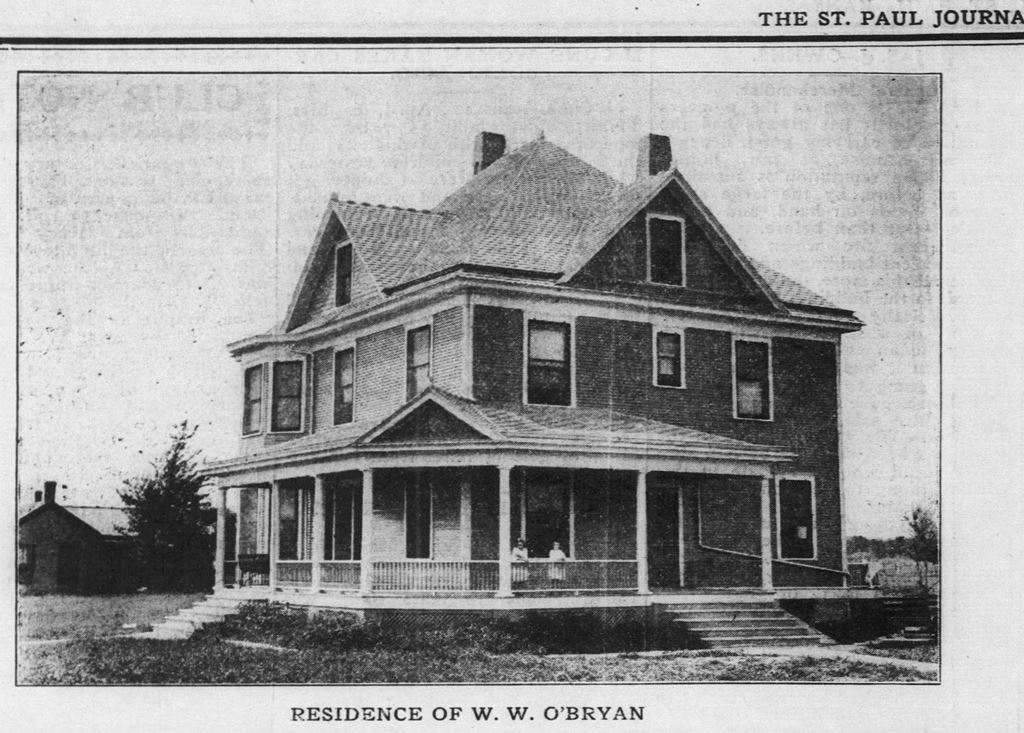
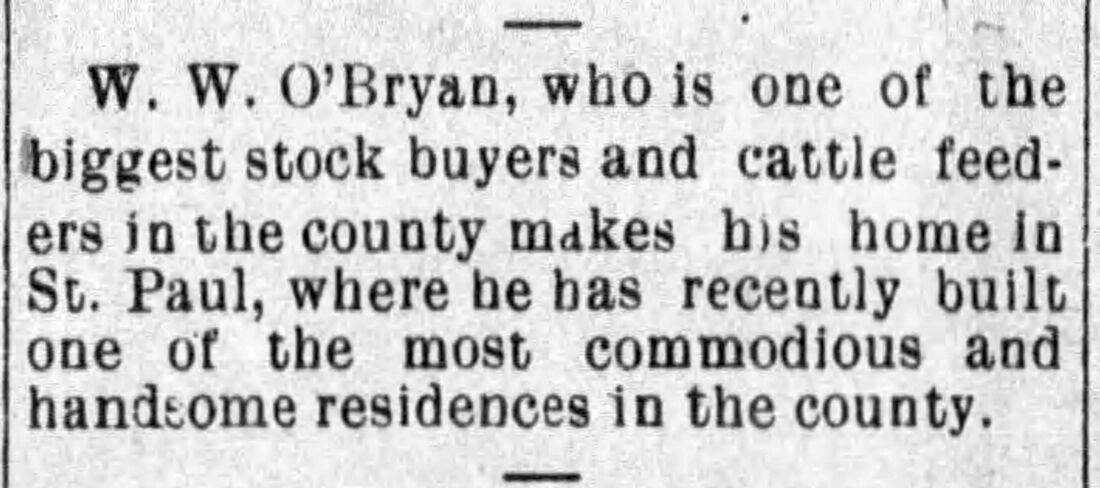

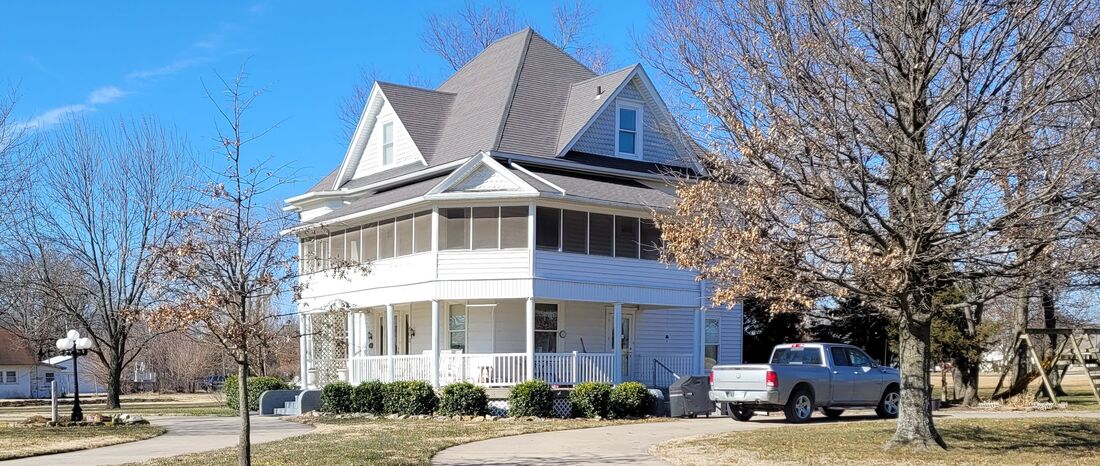
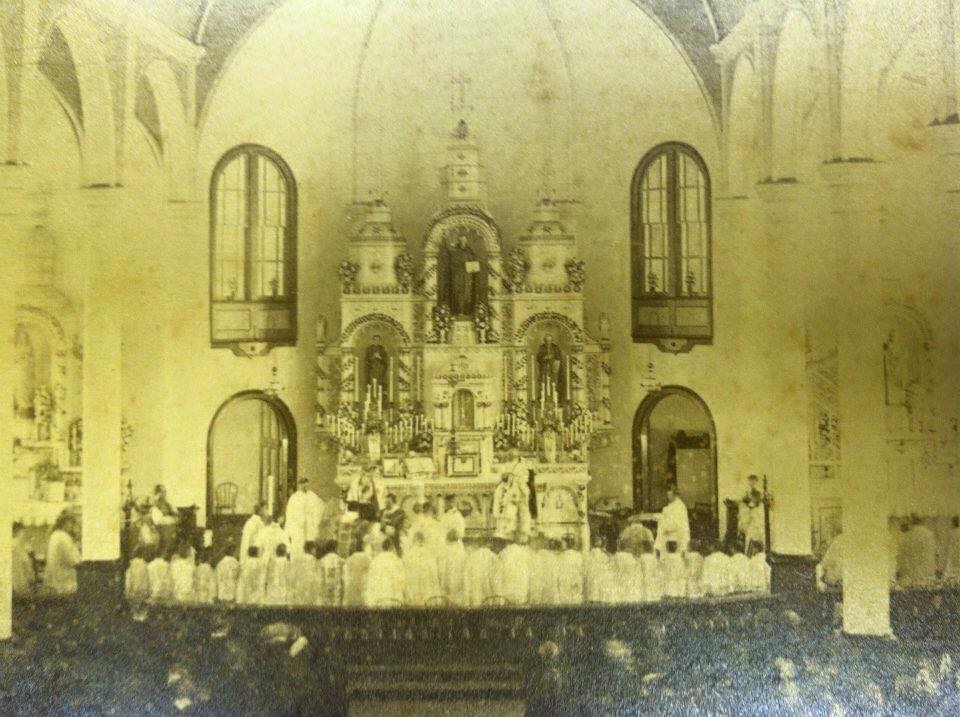
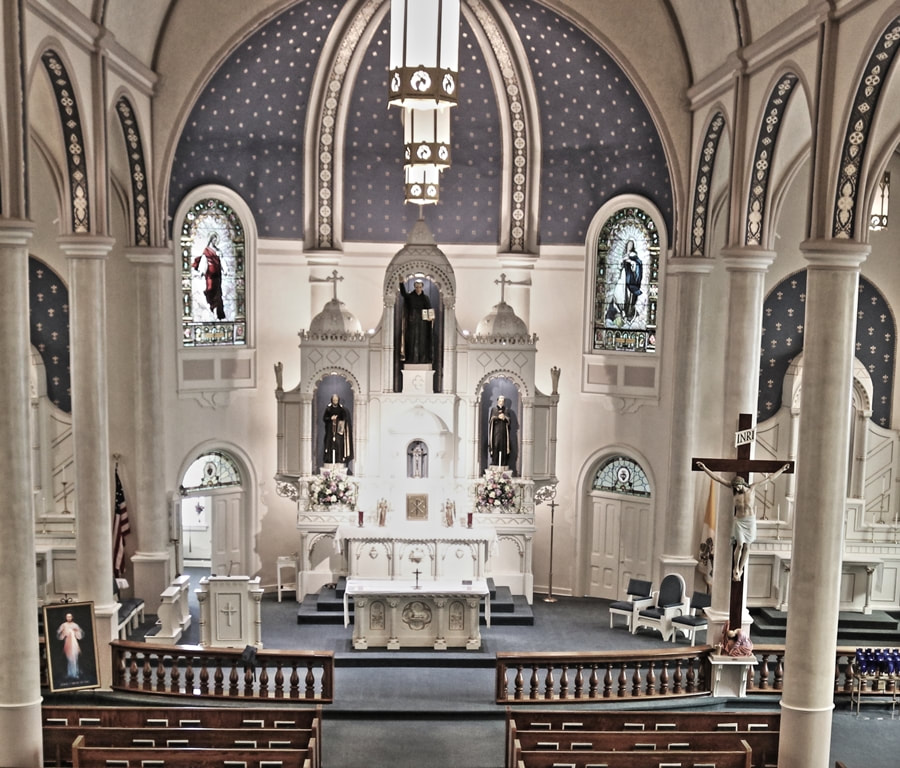
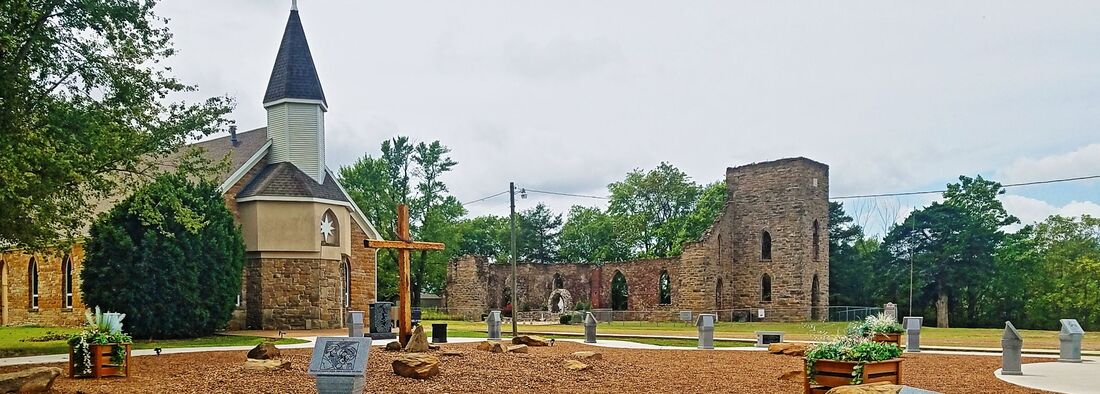

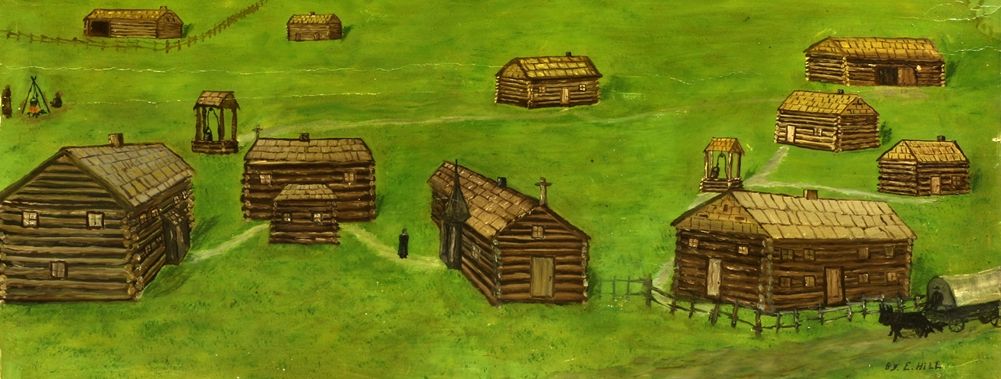


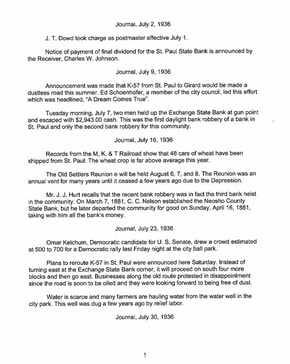
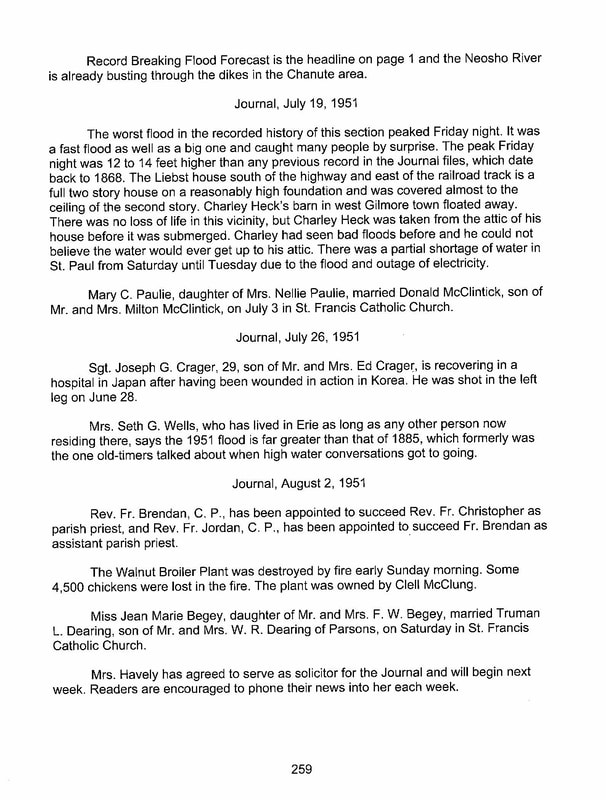
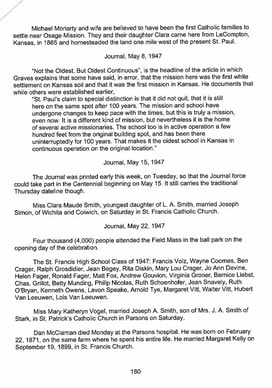
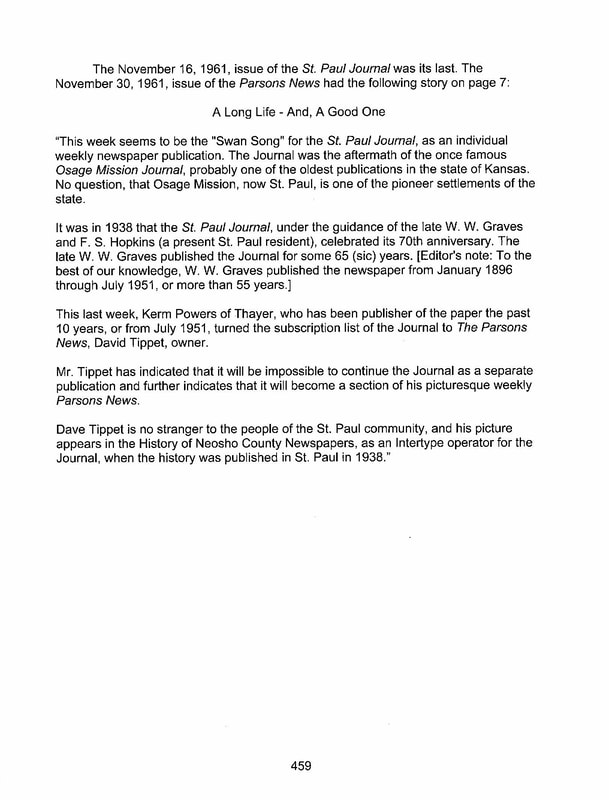
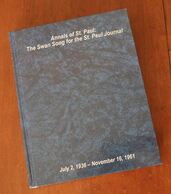
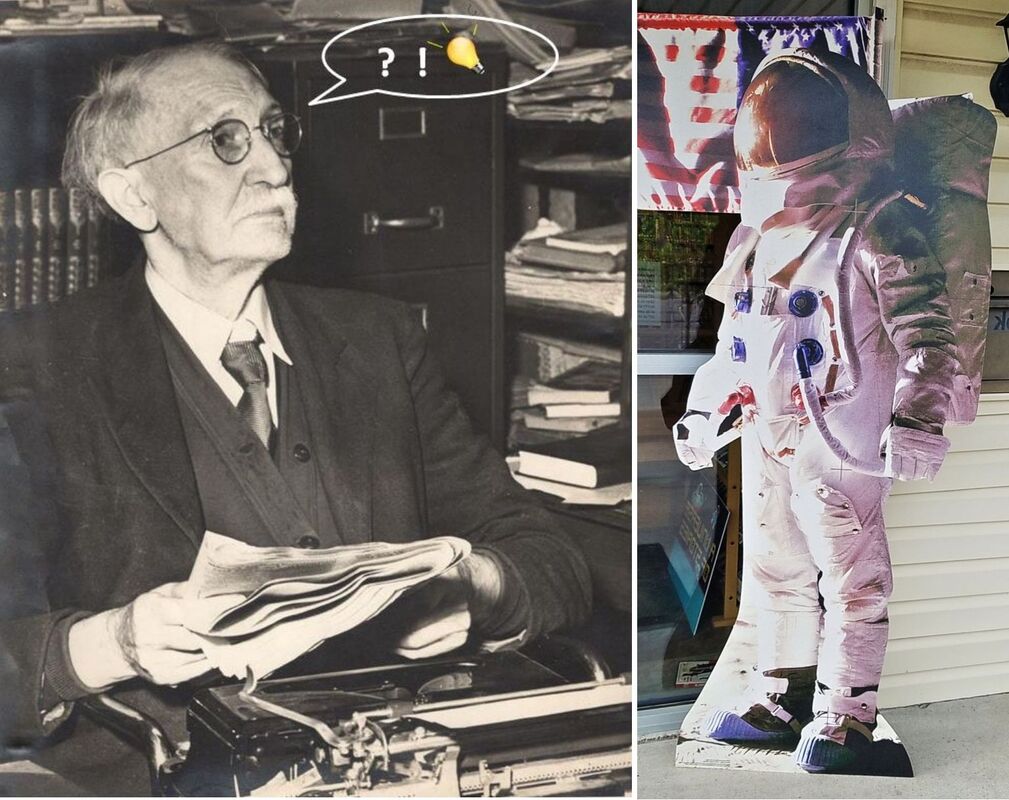

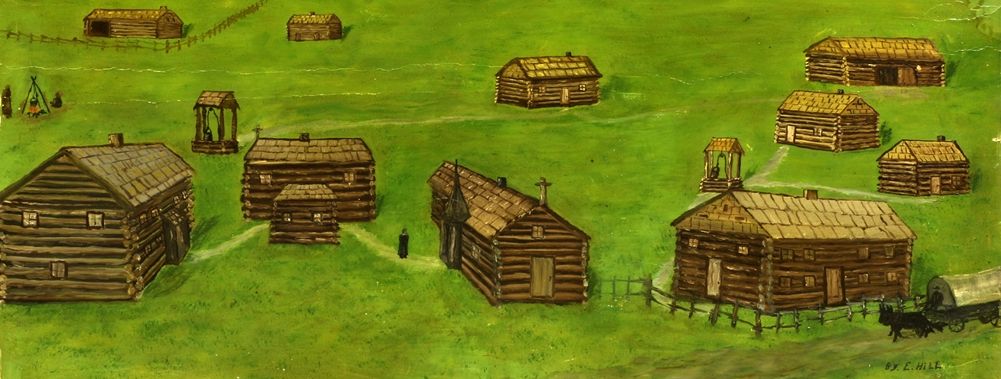

 RSS Feed
RSS Feed